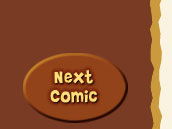The Great Society Comic Book (and its companion book Bobman and Teddy) are no more underground comic books than Mad was in the '60s, but their irreverent satire depicting world-reknown political figures as superheroes and villains holds great attraction to many underground comic fans and collectors. And, in fact, it's quite possible that the writer of these two books was inspired by early comic fanzines from future underground legends like Jay Lynch and Skip Williamson.
The first of the two books was
The Great Society, contemporaneously titled after President Lyndon B. Johnson's iconic catchphrase for modern America. In the comic, the word "Great" becomes an acronym for the powerful alliance "Group Resigned to End All Threats," aka the G.R.E.A.T. Society. This group is led by SuperLBJ (the prez) and its members include his wife and major members of his Cabinet, who all have costumed superhero alter egos. The story begins with the sudden disappearance of SuperLBJ, and the G.R.E.A.T. Society fears that Bobman and Teddy (Bob and Ted Kennedy) are secretly plotting to take over the group, and therefore the entire country, in his absence!
Deeply concerned by this threat, members of the G.R.E.A.T. Society split up and race around the world searching for SuperLBJ, leading each of them into treacherous battles against such evil villains as Nikita Kruschev, Fidel Castro, "Chairman" Mao Zedong and even George Wallace. Their success rate isn't good, but Bobman and Teddy have gone into hiding anyway because of all the negative media coverage about them. Luckily for the G.R.E.A.T. Society, SuperLBJ soon breaks free from captivity to fly to everyone's rescue.
Like many undergrounds, the story is a period piece and firmly set in its particular era.
Unlike many undergrounds, the satire is not savage nor wickedly funny. There's a few nice comic moments, but this ain't no R. Crumb political diatribe by any stretch. The plotting is fast paced, but the conflicts are pretty flat and predictable, as if they might've just as easily been schemed by any political science major in college. Still, it's kind of fun to see these serious historical figures lampooned, and the drawing and caricatures are pretty good.
The Great Society was produced by writer D.J. Arneson and artist Tony Tallarico, both silver age comic book creators who worked primarily for Charlton Comics and Dell Comics.
The Great Society was among five comic books published by Parallax Comic Books (co-founded by a Dell Comics sales executive) in 1966 before the company transitioned into the highly successful independent publisher, Workman Publishing. Arneson briefly recalled the
creation of The Great Society Comic Book in a 2006 interview with Jamie Coville.
Arneson recalls reading several comic fanzines in the mid-60s, which directly inspired him to pursue something as daring (at the time) as
The Great Society. During his interview, Arneson expressed admiration for the fanzines; "They were mimeographed, done by ardent, earnest, I expect young people who were very enthusiastic about comics. It was my sense was that there was a resurgence of interest in comics in general. They had taken umbrage at
The Seduction of the Innocent in where Wertham had challenged the morality of comic books and that they corrupted youth." If Arneson's perception of comic fanzines was linked to artistic rebellion against Wertham, it wouldn't surprise me at all if he had been exposed to early fanzine work by Lynch and Williamson.
At the same time Arneson and Tallarico were producing The Great Society and Bobman and Teddy, they also created Lobo for Dell Comics. Lobo was the first African American comic book hero in history to star in his own comic book. As summarized in my review of Ebon, Lobo was an Old West gunslinger without super powers, so Ebon was still the first true black superhero, but Lobo was the first heroic African American character to star in his own comic book.


 HISTORICAL FOOTNOTES:
HISTORICAL FOOTNOTES:
It is currently unknown how many copies of this comic book were printed. It has not been reprinted. The cover stock is printed on a heavy, linen-textured paper stock with some sort of plastic-feeling material embedded in the stock.

COMIC CREATORS:
D.J. Arneson - 3-34 (story)
Tony Tallarico - 1, 3-34 (art), 36 




























